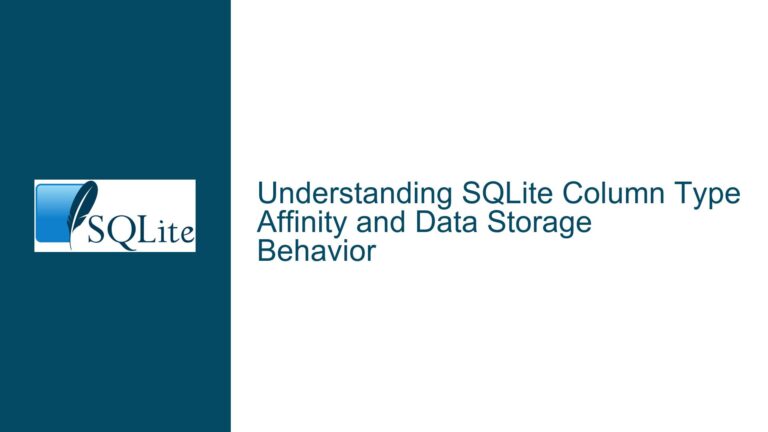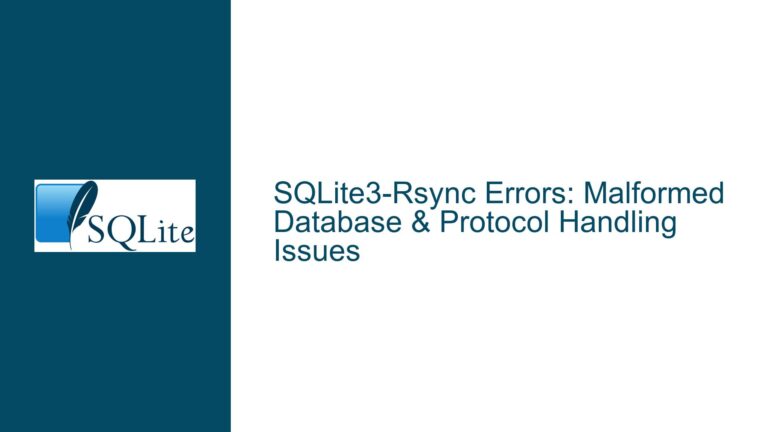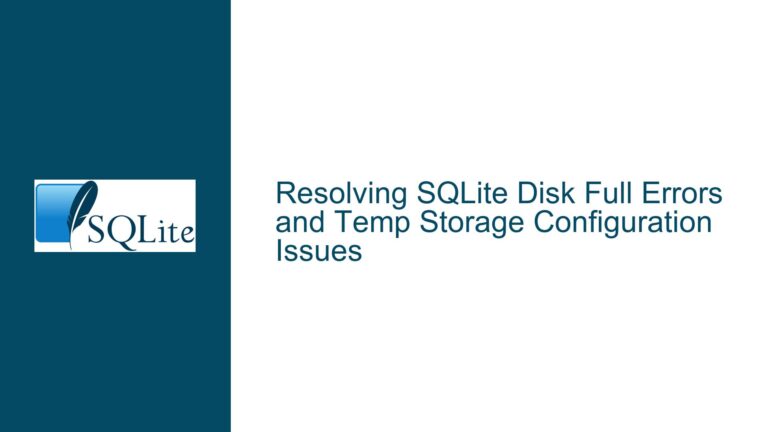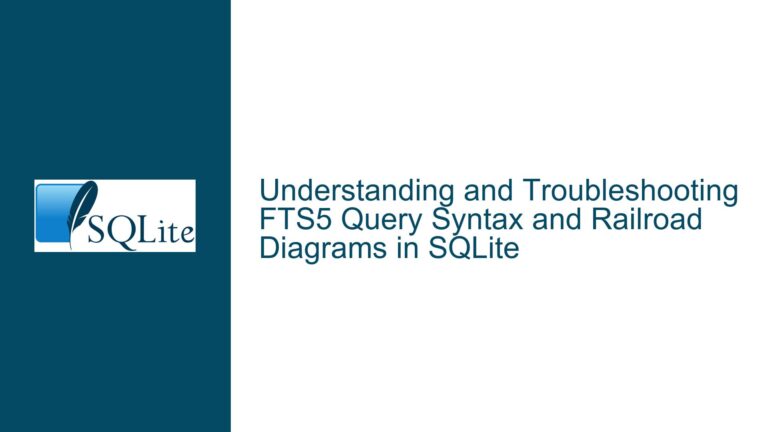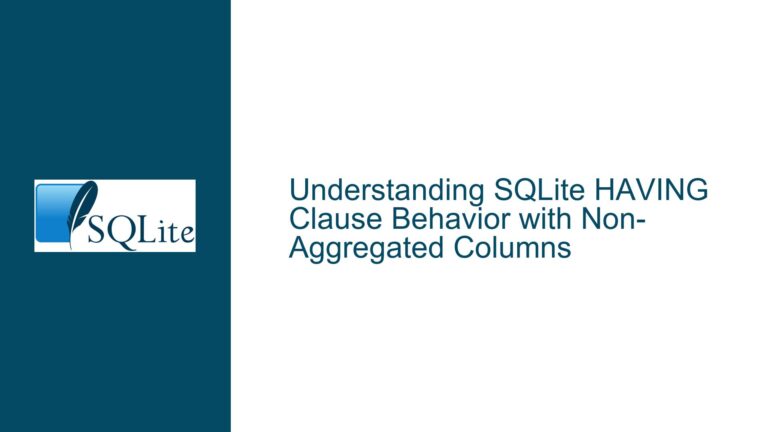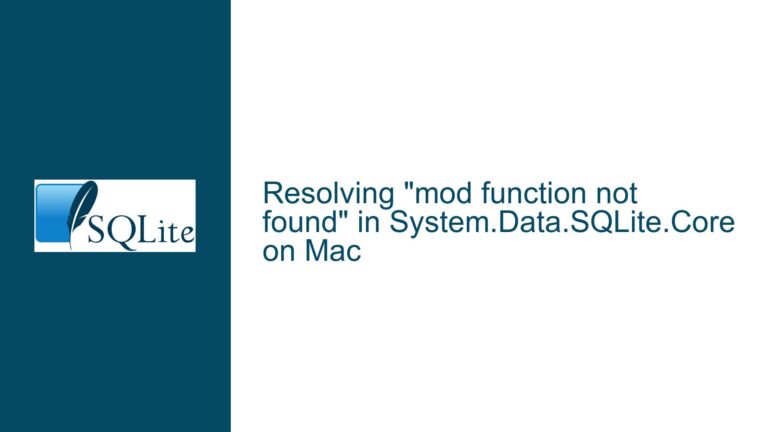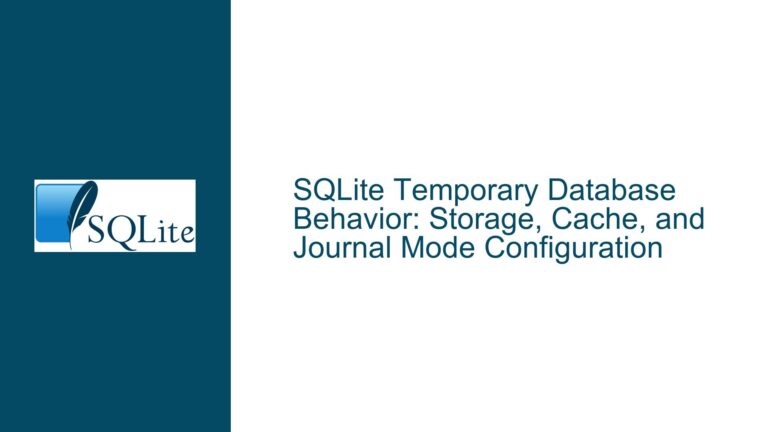SQLite Column Type Affinity and Data Storage Behavior
SQLite’s Column Type Affinity and Data Storage Mechanism SQLite’s approach to data storage and column type affinity is often misunderstood, particularly by developers accustomed to more rigidly typed database systems like PostgreSQL or MySQL. Unlike these systems, SQLite employs a dynamic and flexible typing system that allows for a wide range of data storage behaviors….
